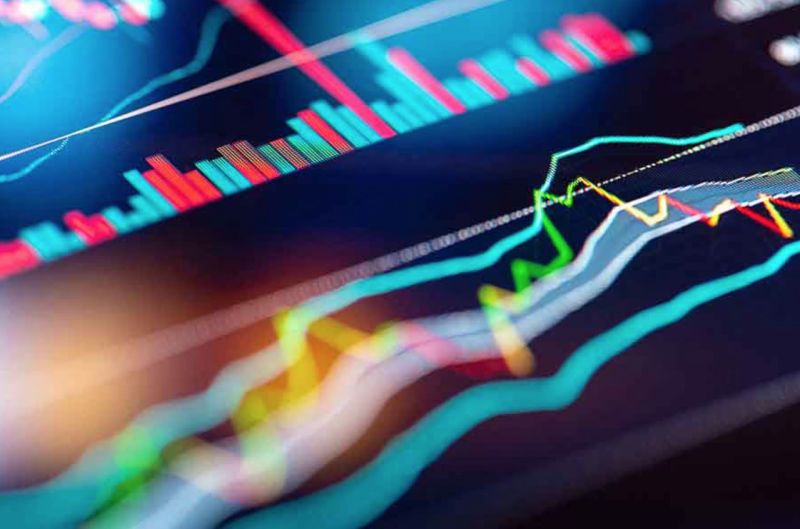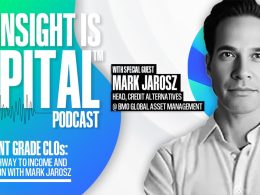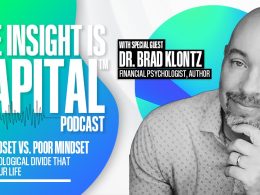by Liz Ann Sonders, Chief Investment Strategist, Kevin Gordon, Charles Schwab & Company Ltd.
Investor sentiment and stock market valuations are getting increasingly stretched as indexes trek higher, but solid underlying breadth has been a positive offset for now.
What the duck

Source: Charles Schwab, Bloomberg, as of 3/1/2024.
Indexes are unmanaged, do not incur management fees, costs and expenses and cannot be invested in directly. Past performance is no guarantee of future results. Some members excluded from year-to-date return columns given additions to indices were after January 2024.
Generals vs. soldiers
As shown below, this year has been marked—so far—by the S&P 500 marching to an all-time high (top part of chart), yet the percentage of stocks trading above their 200-day moving averages (bottom part of chart) has been flat. The early part of the rally off last October's low was accompanied by a sharply rising share of stocks trading above their moving averages; but that has clearly faded over the past couple of months.
New highs but flat breadth

Source: Charles Schwab, Bloomberg, as of 3/1/2024.
Indexes are unmanaged, do not incur management fees, costs and expenses and cannot be invested in directly. Past performance is no guarantee of future results.
Slow improvement in new highs

Source: Charles Schwab, SentimenTrader, as of 3/1/2024.
NYSE (New York Stock Exchange) net high minus low shows the net percentage of NYSE securities trading at a 52-week high minus the percentage trading at a 52-week low. Indexes are unmanaged, do not incur management fees, costs and expenses and cannot be invested in directly. Past performance is no guarantee of future results.
Making up lost ground

Source: Charles Schwab, SentimenTrader, as of 3/1/2024.
NYSE (New York Stock Exchange) cumulative new high/new low line takes the daily net number of 52-week highs minus 52-week lows on the NYSE and adds it to the previous day's total (or subtracts it if there were more lows than highs). Indexes are unmanaged, do not incur management fees, costs and expenses and cannot be invested in directly. Past performance is no guarantee of future results.
Soldiers not keeping up

Source: Charles Schwab, Bloomberg, as of 3/1/2024.
Indexes are unmanaged, do not incur management fees, costs and expenses and cannot be invested in directly. Past performance is no guarantee of future results.
% of S&P 500 members outperforming S&P 500 Index over the past:
- Disclosures
Not as "mag" anymore
The chart below shows their performance since the beginning of 2023, and what's clearly noticeable is the widening divergence in performance so far in 2024 vs. 2023.
Diverging Mag7

Source: Charles Schwab, Bloomberg, as of 3/1/2024.
Data indexed to 100 (base value=12/30/2022). An index number is a figure reflecting price or quantity compared with a base value. The base value always has an index number of 100. The index number is then expressed as 100 times the ratio to the base value. All corporate names and market data shown above are for illustrative purposes only and are not a recommendation, offer to sell, or a solicitation of an offer to buy any security. Supporting documentation for any claims or statistical information is available upon request. Past performance is no guarantee of future results.

Source: Charles Schwab, Bloomberg, as of 3/1/2024.
S&P 500 ranking based on performance within the S&P 500. All corporate names and market data shown above are for illustrative purposes only and are not a recommendation, offer to sell, or a solicitation of an offer to buy any security. Supporting documentation for any claims or statistical information is available upon request. Past performance is no guarantee of future results.
Party like it's 1999?
During the fourth quarter of last year (the books are just closing on its reporting season), top-line growth for the Mag7 was 15% year-over-year. Profit margins were up more than 600 basis points year-over-year, which resulted in year-over-year earnings growth of about 60%. To put that into perspective, the remaining 493 stocks in the S&P 500 actually lost money last quarter, with a year-over-year earnings decline of about 2%.
Valuations are undoubtedly stretched for the Mag7, but they have some of the strongest balance sheets of all U.S. companies, generating gobs of free cash flow. Per Goldman Sachs analysis, the Mag7 reinvests about 60% of that cash flow into capital spending and research/development, which is more than three times what the other 493 companies reinvest.
Yes, the stocks are over-owned and richly valued, but all-or-nothing makes less sense than periodic rebalancing in the interest of keeping concentration risk in your own portfolios at bay. In the meantime, there is a widening array of stocks stealthily performing better this year. We continue to emphasize a factor-oriented approach (screening/investing based on characteristics), with focus on quality-oriented factors like strong free cash flow, ample interest coverage, positive earnings trends, etc.
Everyone's feeling good
Yet, in an odd twist, both confidence indexes have moved higher recently. Per ST, there have only been five prior instances in the DMC and SMC indexes' history when both increased by at least 10% over the prior month and were at or above the 50% threshold (as is the case now). Forward returns in those periods—1999, 2004, 2007, 2013, and 2023—were mixed, especially since two of those years preceded rough bear markets.
Crowd gets confident

Source: Charles Schwab, SentimenTrader, as of 3/1/2024.
SentimenTrader's Smart Money Confidence and Dumb Money Confidence Indexes are used to see what the "good" market timers are doing with their money compared to what the "bad" market timers are doing and are presented on a scale of 0% to 100%. When the Smart Money Confidence Index is at 100%, it means that those most correct on market direction are 100% confident of a rising market. When it is at 0%, it means good market timers are 0% confident in a rally. The Dumb Money Confidence Index works in the opposite manner.
Excited, but not euphoric

Source: Charles Schwab, SentimenTrader, as of 3/1/2024.
This model is based on the Citi Panic/Euphoria model that is published in Barron's magazine. It does not reflect those published values, rather it is our interpretation of the model inputs and construction, and differs modestly from the published figures. The inputs are the same, however its performance as a contrary indicator is improved over the published values. It is composed of the following primary inputs: NYSE short interest, margin debt, Nasdaq vs NYSE volume, Investor's Intelligence survey, AAII survey, retail money market funds, put/call ratios, commodities prices, and retail gasoline prices. The higher the model, the more investors are in a euphoric mood, with lower expected stock returns going forward. Low values, particularly below zero, suggest that investors have panicked and higher forward returns are expected. Past performance is no guarantee of future results.
Pay up
With the market having surpassed its January 2022 high, we can now definitively say that the October 2022 low for the S&P 500 was the most expensive trough in history (shown via the far-right yellow dot in the chart). It didn't take long in the market's run since last October to get back to the expensive end of this P/E's historical range. However, like the Panic/Euphoria Index, it's not yet back to extremes seen in prior cycle peaks.
Valuation rich but not extreme

Source: Charles Schwab, The Leuthold Group, as of 2/23/2024.
Normalized P/E uses five-year average earnings (18 quarters of historical results combined with two quarters of future estimates). Indexes are unmanaged, do not incur management fees, costs and expenses and cannot be invested in directly. Past performance is no guarantee of future results.
Second, and related to the earlier points made about sentiment, frothy sentiment in and of itself is not a contrarian market timing tool (and vice-versa in times of pessimism). It is true that for many sentiment metrics, the current zone of optimism tends to be consistent with weak forward equity returns; however, a negative catalyst is typically needed to push stocks in the other direction. This could come in the form of surprises in economic and/or inflation data, adjustments in the outlook for Federal Reserve policy, or a breakdown in the market's underlying breadth.
In the meantime…
Copyright © Charles Schwab & Company Ltd.
















